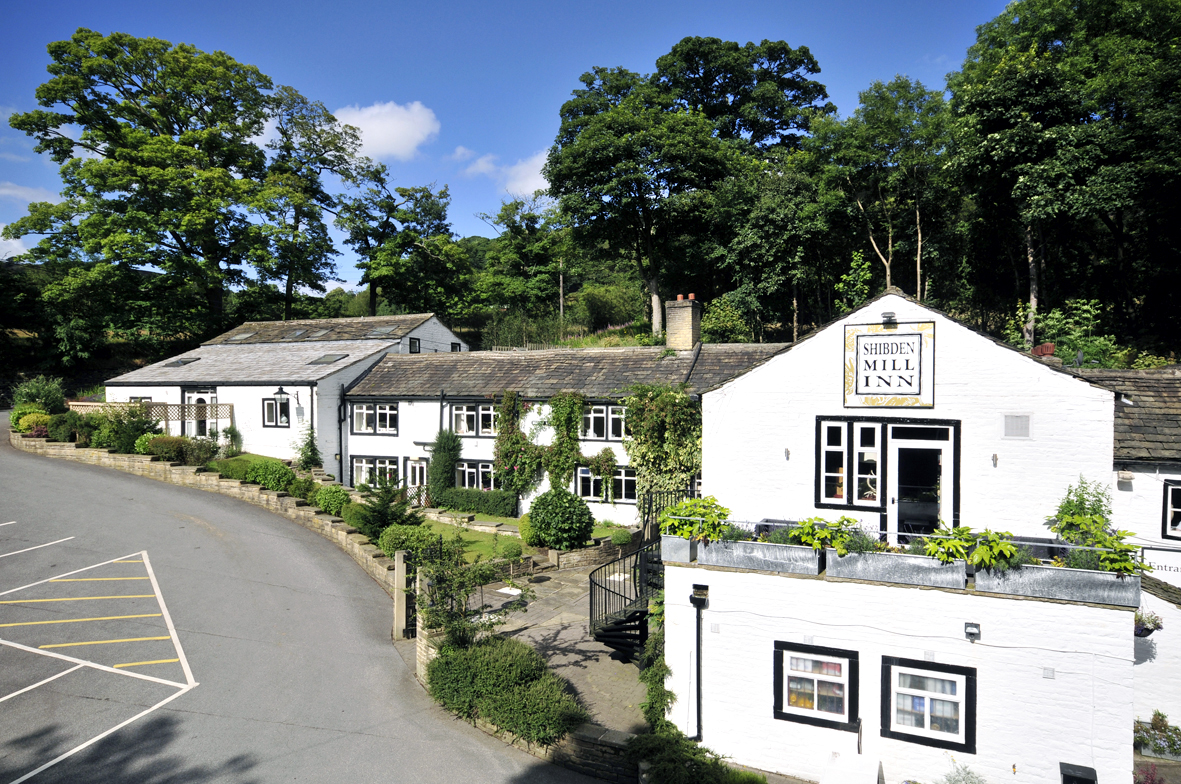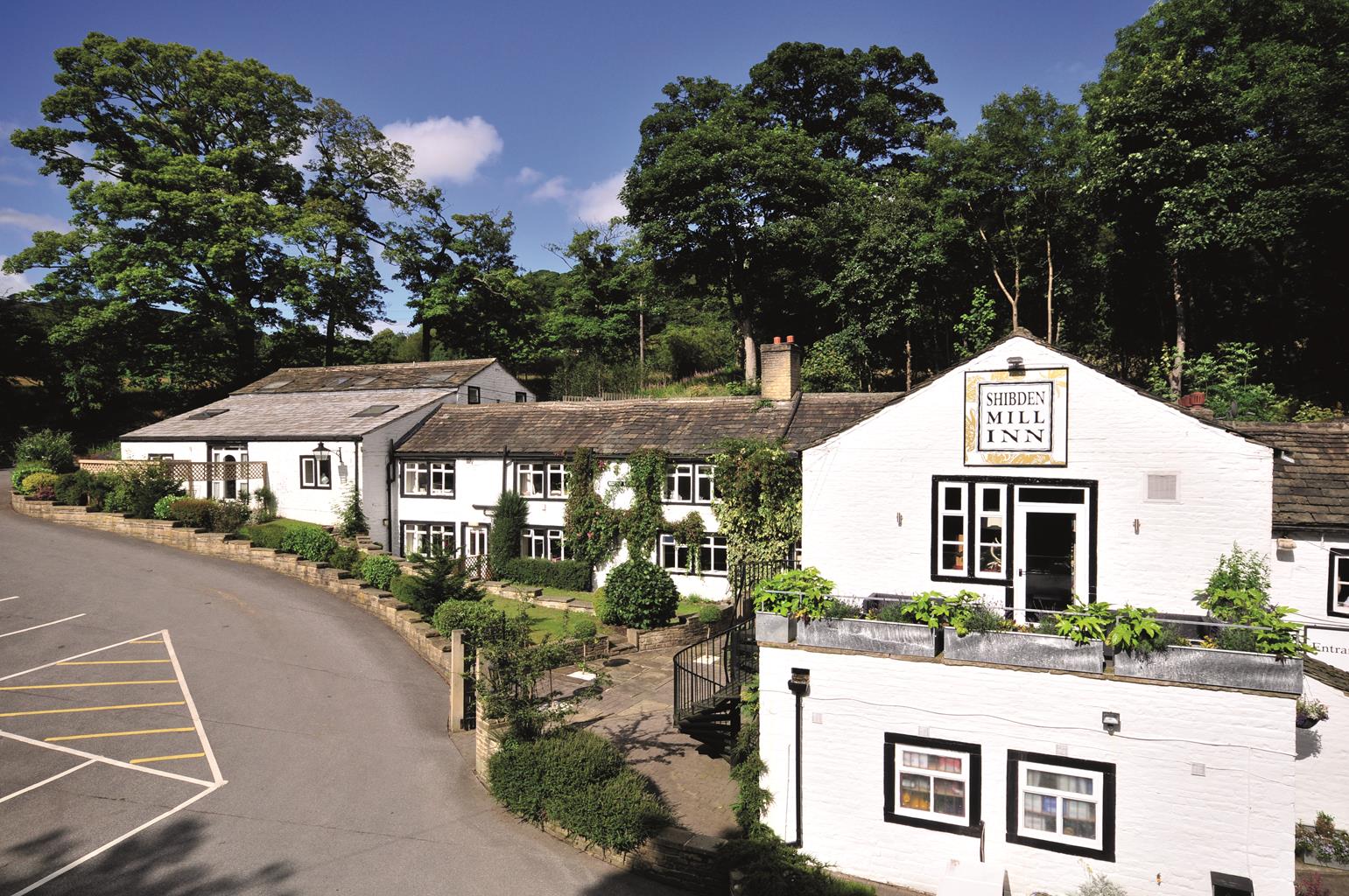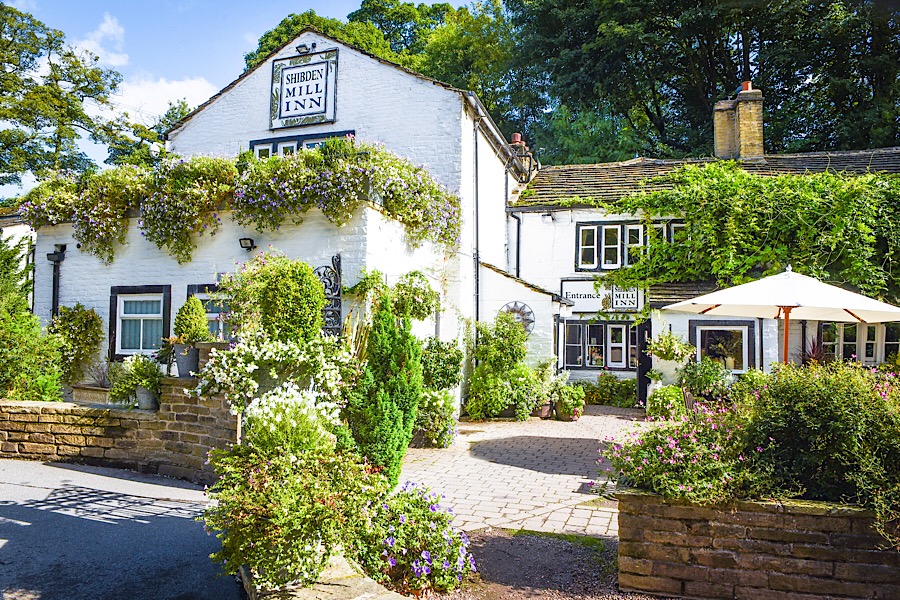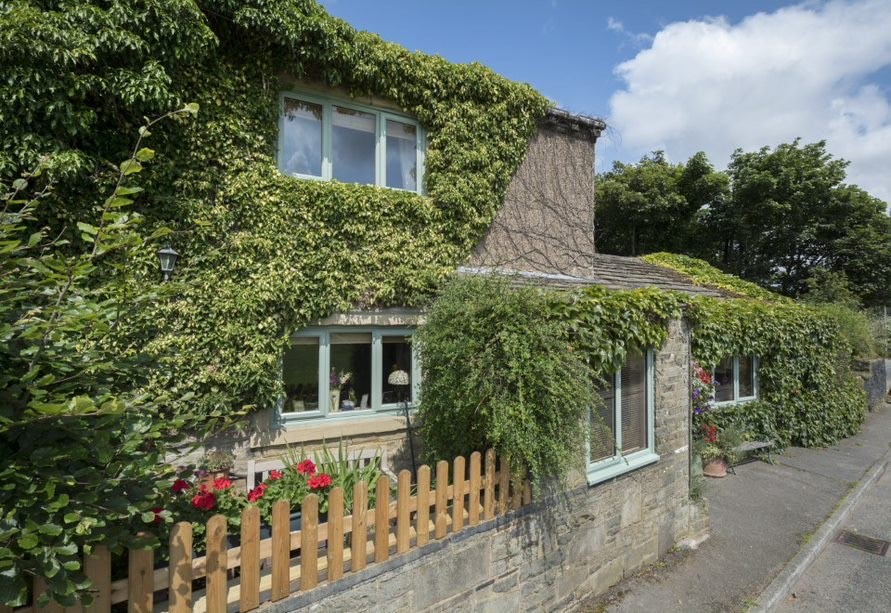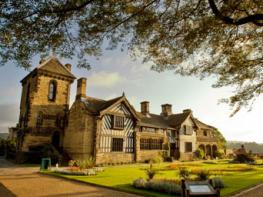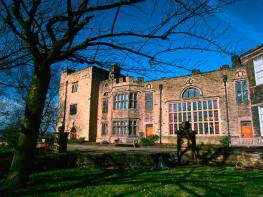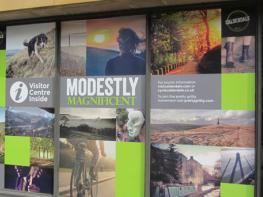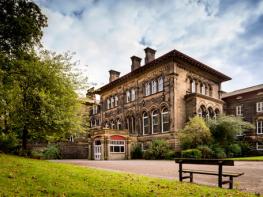Shibden Mill Inn is a 17th-century building tucked into the side of a country road in Shibden…
A stroll through Judy Woods

Surrounded by towns these are some of the finest beech woods in West Yorkshire
3.5 miles (5.7kms)
About the walk
Set within the deep fold of Royd Hall Beck, Judy woods is a fragment of a once extensive forest that stretched to the Midlands. Despite it now being flanked by the conurbations of Bradford and Halifax, it survives as one of the finest semi-natural woodlands in the county and is a haven for all manner of wildlife.
An industrial past
The valley's steep sides saved it from historical clearance for agriculture, but the underlying geology attracted a different sort of activity – mining for coal and later iron ore. Initially, from the medieval period, it was undertaken on a small scale in the form of shallow bell pits, whose remains can still be found amongst the trees in the crater-like hollows of collapsed workings. But mechanisation towards the end of the 18th century enabled deeper mines and the area was taken over to supply raw material for the Low Moor Iron Company, which manufactured a whole range of products including some of the cannon used at the Battle of Waterloo. Over 25 miles of wagonway were laid through the woods to transport coal and ore to the nearby factory and many of the embankments and inclines are still visible today.
Beech plantings
One of the delightful features of the woodland is the preponderance of massive beech trees, which produce a magnificent spectacle of colour each autumn. Planted during the 18th century, these too were intended for profit – to provide wood for the manufacture of bobbins and spindles for the local textile industry. Despite their majestic appearance, their dense foliage shades the ground to the detriment of other species and they are gradually being replaced by the native birch and oak that would have formed the original woodland cover.
A Victorian pleasure garden
Some time after the beech were planted, the area was opened as a pleasure garden. It acquired the name Judy Woods after Judy North, who lived in a cottage by Horse Close Bridge, a packhorse bridge across the stream and now known as Judy Bridge. Her husband had been employed as gardener on the estate and, after his death Judy and her son continued in his stead. Augmenting their income, Judy began selling refreshments to the visitors and was variously called Stick o'Judy, from the sweets she sold or 'Gurt' Judy because of her ample proportions.
The woods are now managed for the benefit of wildlife and attract a rich variety of birds. In summer, migrant warblers such as blackcap, chiffchaff and willow warbler arrive from Africa, while in winter, fieldfare and redwing come from the north. Owls, woodpeckers, nuthatches and many garden birds can be spotted all year round. Look out too for roe deer and bats. Spring is particularly beautiful for the bluebells that carpet the glades. Autumn is the time, not only for the turning leaves, but also fungi, which can be found in profusion through the valley.
Walk directions
From the upper entrance to the woods on Station Road, where there is a notice board and kissing gate, follow a path into the trees signed to Woodside. Where it subsequently swings left, turn off right, walking to a stile at the edge of the trees. Head away across open ground, following an old incline that rises towards a high fence surrounding the perimeter of Appleton Academy. Go left, passing through a gate and continuing out to a lane.
Turn right up the hill, walking as far as the entrance to the school. There, turn left onto an unadopted street, Carr House Gate. Follow it past houses to its very end by a breaker's yard. Keep ahead to pick up a path that passes behind more houses. Swinging beneath the foot of communication masts it continues between open fields. Meeting a track, go right to Royds Hall.
Follow the track between cottages and an old stable block. Immediately after it swings right past the entrance to the farm, leave over a wall stile on the left. Walk away on a shallow angle to find another stile set left of the far corner. Carry on beside a wall on the right, continuing forward beyond its end within a fringe of beech trees. Keep ahead until you reach a kissing gate leading out to houses.
However, instead of passing through, swing left on a path towards Judy Woods. Go through the kissing gate there and follow a good path into the trees. Eventually the gravel way peters out, but keep ahead, now gently descending on a rougher path. Later becoming stepped, it drops to a plank bridge across a stream. Cross and follow Royd Hall Beck to Judy Bridge, a short distance downstream.
Climb to the track above and follow it left uphill. However, a short distance along slip through a gap in the right wall to continue on a parallel path. At the top, swing right and walk away, again on a gravel path that wends along the broad crest of the wood. Eventually reaching the junction passed at the start of the walk, go right back to Station Road.
Additional information
Good tracks and woodland paths, several stiles
Arable land and beech woods
Can be off lead in woods
OS Explorer 288 Bradford & Huddersfield
On Station Road (off the A641 at Wyke) near information panel and kissing gate leading into Judy Woods
None on route
WALKING IN SAFETY
Read our tips to look after yourself and the environment when following this walk.
Find out more
Also in the area
About the area
Discover West Yorkshire
Everybody knows that Yorkshire has some special landscapes. The Dales and the Moors first spring to mind, but what about West Yorkshire? That’s Leeds and Bradford isn’t it? Back-to-back houses and blackened mills… Certainly if you had stood on any of the hills surrounding Hebden Bridge a hundred years ago, and gazed down into the valley, all you would have seen was the pall of smoke issuing from the chimneys of 33 textile mills. But thankfully, life changes very quickly in West Yorkshire. The textile trade went into terminal decline, the mills shut down forever and in a single generation Hebden Bridge became a place that people want to visit.
The surrounding countryside offers walking every bit as good as the more celebrated Yorkshire Dales; within minutes you can be tramping across the moors. And this close proximity of town and country is repeated all across West Yorkshire. There’s such diversity in the area that you can find yourself in quite unfamiliar surroundings, even close to places you may know very well. Take time to explore this rich county and you will be thrilled at what you find to shatter old myths and preconceptions.
Nearby stays
Restaurants and Pubs
Nearby experiences
Recommended things to do
Why choose Rated Trips?
Your trusted guide to rated places across the UK
The best coverage
Discover more than 15,000 professionally rated places to stay, eat and visit from across the UK and Ireland.
Quality assured
Choose a place to stay safe in the knowledge that it has been expertly assessed by trained assessors.
Plan your next trip
Search by location or the type of place you're visiting to find your next ideal holiday experience.
Travel inspiration
Read our articles, city guides and recommended things to do for inspiration. We're here to help you explore the UK.

